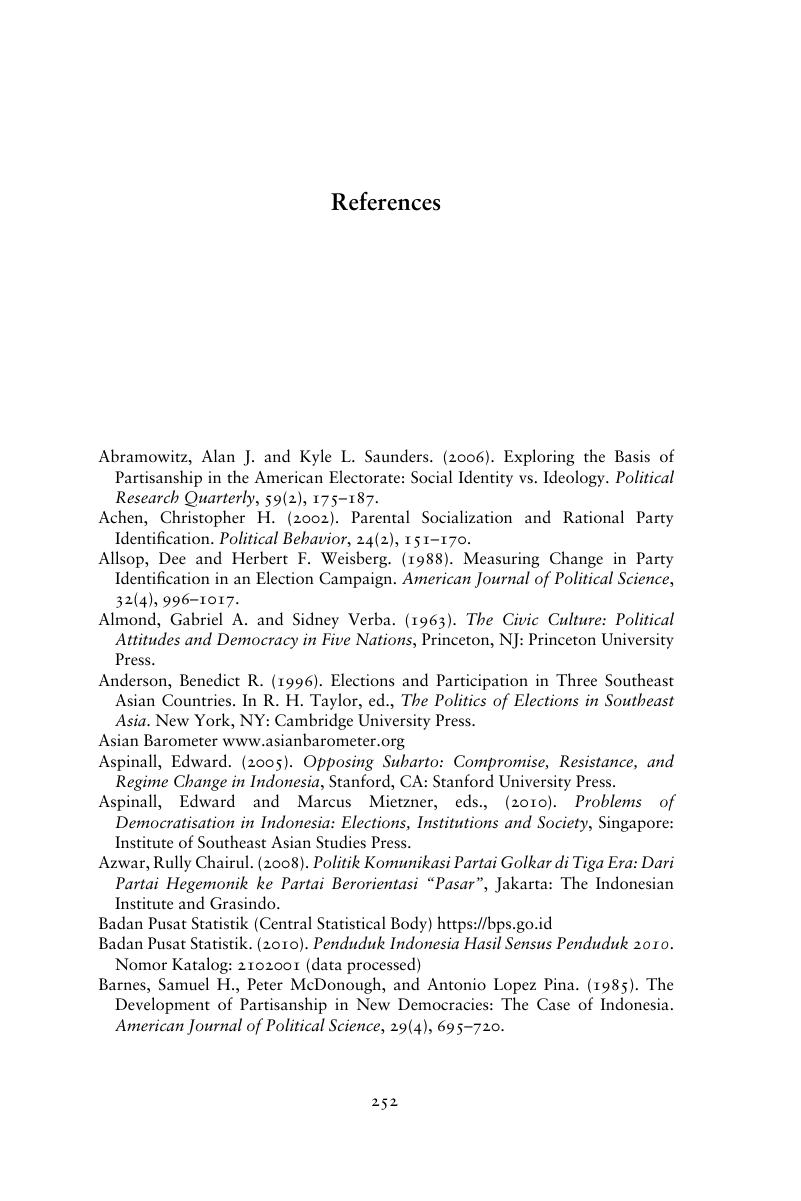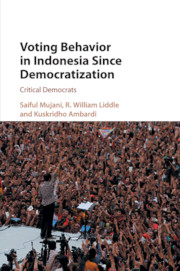Book contents
- Voting Behavior in Indonesia since Democratization
- Voting Behavior in Indonesia since Democratization
- Copyright page
- Dedication
- Contents
- Figures
- Tables
- Acknowledgments
- 1 Introduction: Indonesia and Critical Democracy
- 2 The Emergence of Critical Democrats
- 3 Participation and Choice
- 4 Sociological and Demographic Factors
- 5 Rational Voters
- 6 Party Identity and Political Leaders
- 7 Conclusion
- Appendix Data, Method, and Model
- Glossary
- References
- Name Index
- Subject Index
- References
References
Published online by Cambridge University Press: 23 February 2018
- Voting Behavior in Indonesia since Democratization
- Voting Behavior in Indonesia since Democratization
- Copyright page
- Dedication
- Contents
- Figures
- Tables
- Acknowledgments
- 1 Introduction: Indonesia and Critical Democracy
- 2 The Emergence of Critical Democrats
- 3 Participation and Choice
- 4 Sociological and Demographic Factors
- 5 Rational Voters
- 6 Party Identity and Political Leaders
- 7 Conclusion
- Appendix Data, Method, and Model
- Glossary
- References
- Name Index
- Subject Index
- References
Summary

- Type
- Chapter
- Information
- Voting Behavior in Indonesia since DemocratizationCritical Democrats, pp. 252 - 260Publisher: Cambridge University PressPrint publication year: 2018



